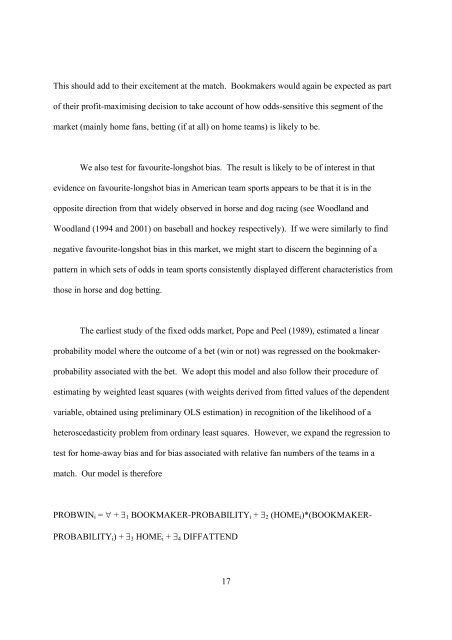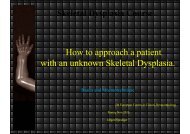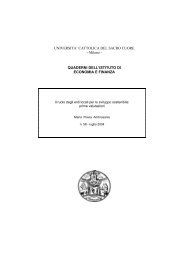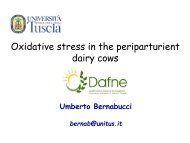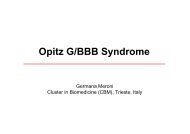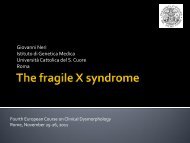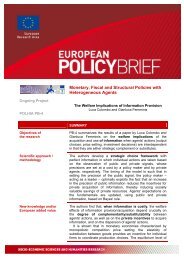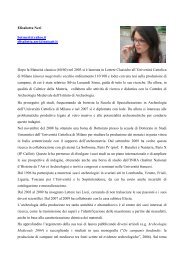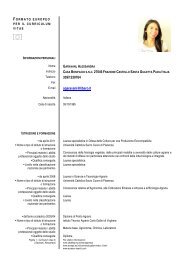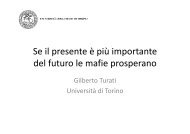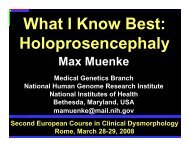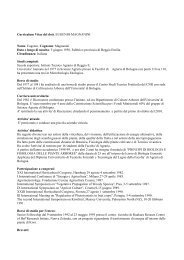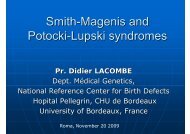Globalisation and Efficiency in the Fixed-odds Soccer Betting ... - Istituti
Globalisation and Efficiency in the Fixed-odds Soccer Betting ... - Istituti
Globalisation and Efficiency in the Fixed-odds Soccer Betting ... - Istituti
Create successful ePaper yourself
Turn your PDF publications into a flip-book with our unique Google optimized e-Paper software.
This should add to <strong>the</strong>ir excitement at <strong>the</strong> match. Bookmakers would aga<strong>in</strong> be expected as part<br />
of <strong>the</strong>ir profit-maximis<strong>in</strong>g decision to take account of how <strong>odds</strong>-sensitive this segment of <strong>the</strong><br />
market (ma<strong>in</strong>ly home fans, bett<strong>in</strong>g (if at all) on home teams) is likely to be.<br />
We also test for favourite-longshot bias. The result is likely to be of <strong>in</strong>terest <strong>in</strong> that<br />
evidence on favourite-longshot bias <strong>in</strong> American team sports appears to be that it is <strong>in</strong> <strong>the</strong><br />
opposite direction from that widely observed <strong>in</strong> horse <strong>and</strong> dog rac<strong>in</strong>g (see Woodl<strong>and</strong> <strong>and</strong><br />
Woodl<strong>and</strong> (1994 <strong>and</strong> 2001) on baseball <strong>and</strong> hockey respectively). If we were similarly to f<strong>in</strong>d<br />
negative favourite-longshot bias <strong>in</strong> this market, we might start to discern <strong>the</strong> beg<strong>in</strong>n<strong>in</strong>g of a<br />
pattern <strong>in</strong> which sets of <strong>odds</strong> <strong>in</strong> team sports consistently displayed different characteristics from<br />
those <strong>in</strong> horse <strong>and</strong> dog bett<strong>in</strong>g.<br />
The earliest study of <strong>the</strong> fixed <strong>odds</strong> market, Pope <strong>and</strong> Peel (1989), estimated a l<strong>in</strong>ear<br />
probability model where <strong>the</strong> outcome of a bet (w<strong>in</strong> or not) was regressed on <strong>the</strong> bookmaker-<br />
probability associated with <strong>the</strong> bet. We adopt this model <strong>and</strong> also follow <strong>the</strong>ir procedure of<br />
estimat<strong>in</strong>g by weighted least squares (with weights derived from fitted values of <strong>the</strong> dependent<br />
variable, obta<strong>in</strong>ed us<strong>in</strong>g prelim<strong>in</strong>ary OLS estimation) <strong>in</strong> recognition of <strong>the</strong> likelihood of a<br />
heteroscedasticity problem from ord<strong>in</strong>ary least squares. However, we exp<strong>and</strong> <strong>the</strong> regression to<br />
test for home-away bias <strong>and</strong> for bias associated with relative fan numbers of <strong>the</strong> teams <strong>in</strong> a<br />
match. Our model is <strong>the</strong>refore<br />
PROBWINi = ∀ + ∃1 BOOKMAKER-PROBABILITYi + ∃2 (HOMEi)*(BOOKMAKER-<br />
PROBABILITYi) + ∃3 HOMEi + ∃4 DIFFATTEND<br />
17


